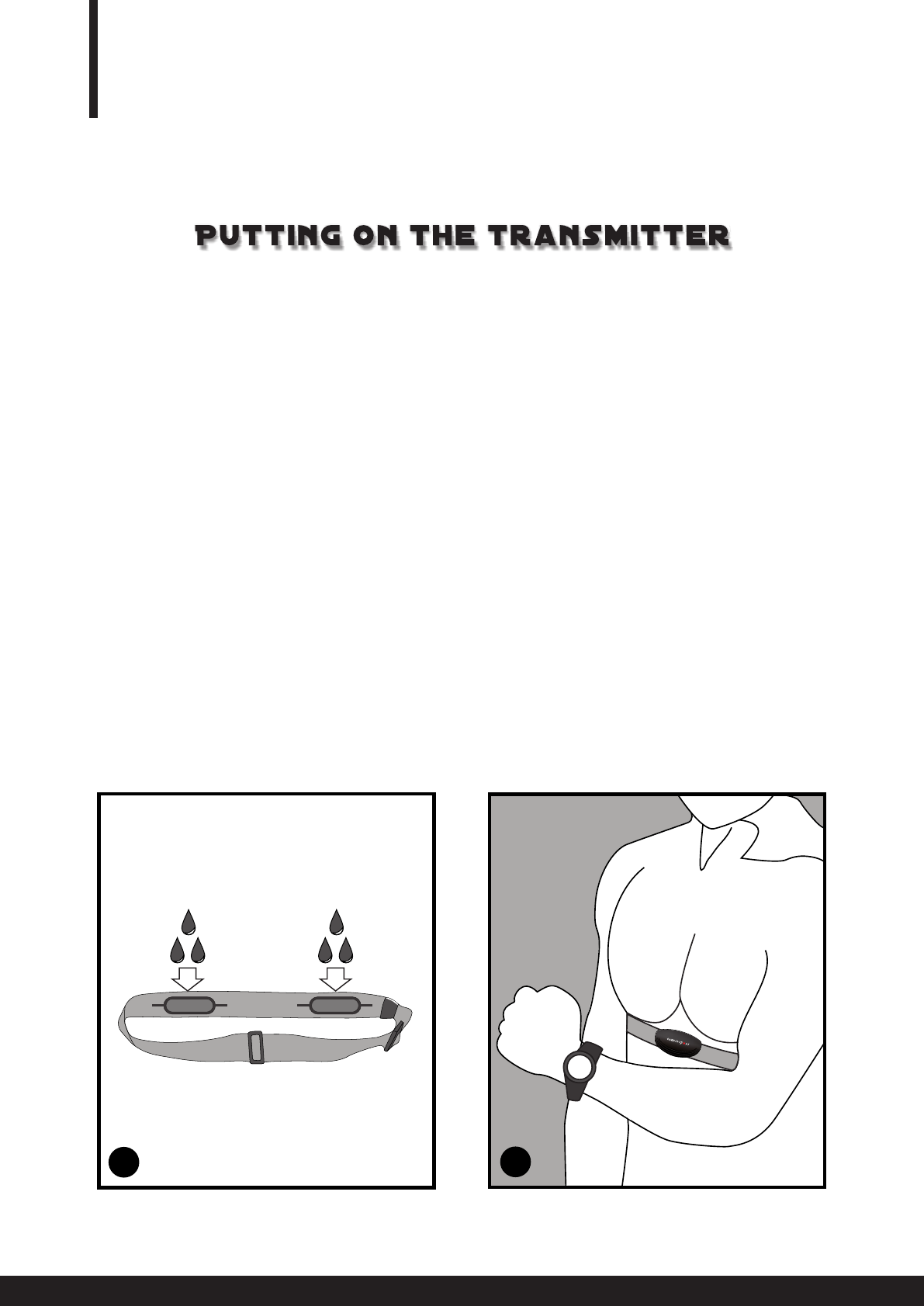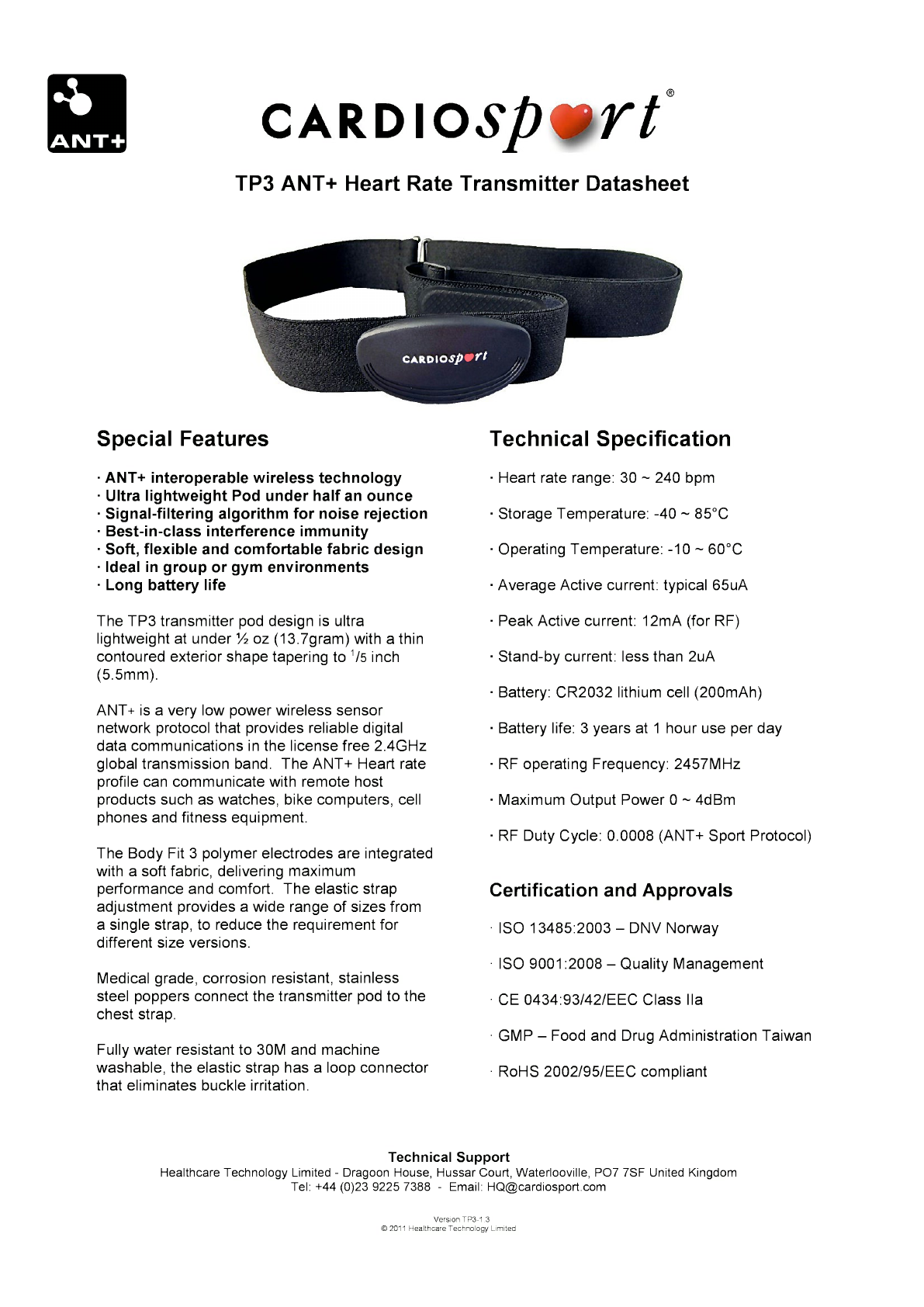Zentan Technology AHRCS5 TP3 ANT + Heart Rate Transmitter User Manual
Zentan Technology Co., Ltd. TP3 ANT + Heart Rate Transmitter
User Manual

▪ Attach one end of the adjustable elastic strap to the transmitter
▪ Moisten the rubber electrodes of the belt with either water or saliva as shown
▪ Position the transmitter on the chest just below the breastbone,
with the Cardiosport logo the right way up.
▪ Pass the elastic strap around your chest and attach to the other end of the
transmitter.
▪ Adjust the strap to give a close but comfortable fit.
12
CAUTION
RISK OF EXPLOSION IF BATTERY IS REPLACED
BY AN IN CORRECT TYPE.
DISPOSE OF USED BATTERIES ACCORDING
TO THE INSTRUCTIONS

Federal Communication Commission Interference Statement
This equipment has been tested and found to comply with the limits for a Class B digital
device, pursuant to Part 15 of the FCC Rules. These limits are designed to provide
reasonable protection against harmful interference in a residential installation. This
equipment generates, uses, and can radiate radio frequency energy and, if not installed
and used in accordance with the instructions, may cause harmful interference to radio
communications. However, there is no guarantee that interference will not occur in a
particular installation. If this equipment does cause harmful interference to radio or
television reception, which can be determined by turning the equipment off and on, the
user is encouraged to try to correct the interference by one or more of the following
measures:
• Reorient or relocate the receiving antenna.
• Increase the separation between the equipment and receiver.
• Connect the equipment into an outlet on a circuit different from that to which the receive
r
is connected.
• Consult the dealer or an experienced radio/TV technician for help.
FCC Caution:
This device complies with Part 15 of the FCC Rules. Operation is subject to the following
two conditions: (1) This device may not cause harmful interference, and (2) this device
must accept any interference received, including interference that may cause undesired
operation.
.
changes / modifications not approved by the responsible party could void the
user’s authority to operate the equipment.